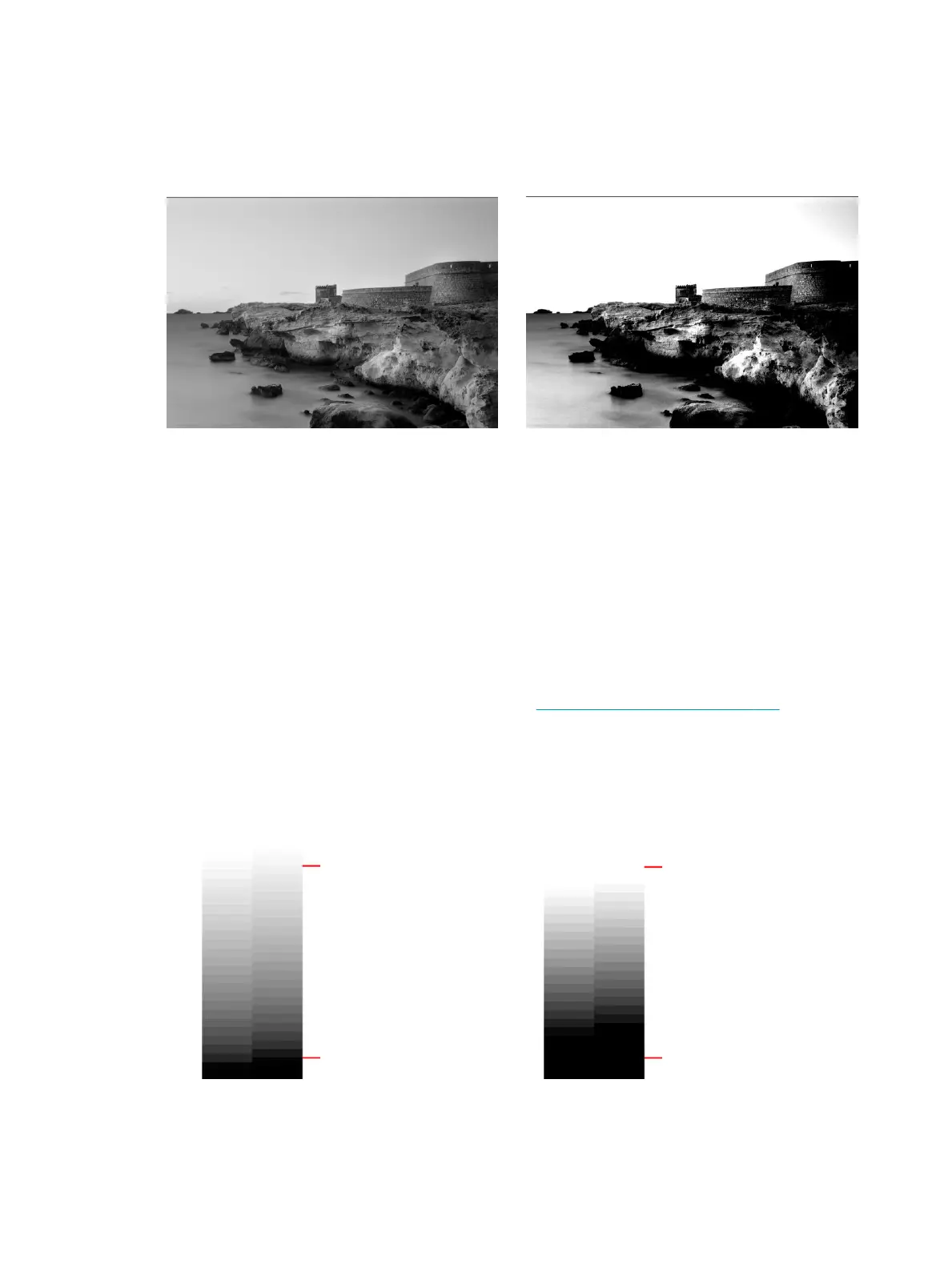Clipping in dark or light areas
Sometimes you may see that the scanned le or copy of one of your plots has lost detail in light or dark areas
(or both), as in the example below: original on the left, scanned image on the right.
Image © www.convincingblack.com, reproduced with permission.
Actions
1. If you are making copies, and the original is printed on photographic paper, while you are copying it onto
matte paper, this problem is to be expected. However, you can try to reboot the printer and set the
background color and noise removal to O and also change the Lighter/Darker settings; this also applies
if you see this problem in scanned les.
2. If the problem persists, repeat the scan or copy using a higher resolution (300dpi or higher if scanning,
Normal or Best if copying). Set the content type to Image (if copying).
3. If the problem persists, recalibrate the scanner, see Preventive maintenance on page 529. Make sure
you clean the maintenance sheet before calibrating the scanner, and check that the maintenance sheet
is not damaged. Re-scan your original after the calibration is completed.
4. If the problem persists, analyze patterns M (0, 1 and 2 modules) of the diagnostic plot. If you can
distinguish lightness steps beyond the upper and lower specied thresholds, then the scanner is ne.
Here you can see some examples of correct and incorrect functioning.
ENWW Scan and copy quality troubleshooting 159

